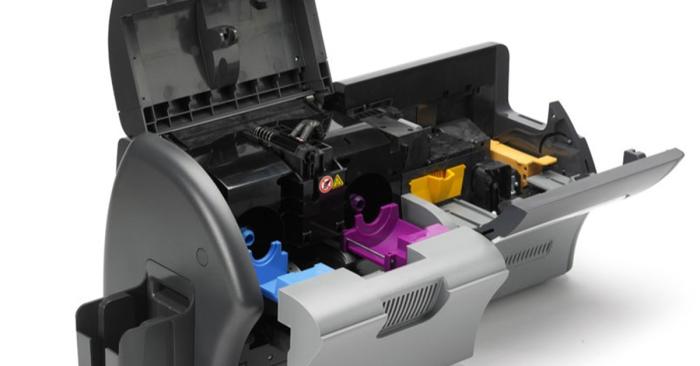How Do ID Card Printers Work?
March 19 2020

All ID card printers are similar in that they use a color ribbon to produce images, graphics, and text on a PVC ID card. However, getting that information on the face of an ID card is different depending on the ID card printer you choose. Let's look closer at the two different ID cards printers and how they work.
Direct-to-card ID card printers
Direct-to-card printers use a process called dye sublimation. The printer ribbon contains dye in different color panels: Yellow, Magenta, and Cyan. These panels make up over 16 million colors on a 300-dpi resolution printer.
As the printer's printhead heats up, it comes in contact with the ribbon and turns each color dye into a vapor that "sublimates" or diffuses directly on a PVC card's surface. The reason it's called direct-to-card is because the printhead prints graphics, images, and text directly on the card's surface with no in-between process or materials.
Retransfer ID card printers
The other ID card printer is a retransfer printer. Instead of printing directly to a PVC card's surface, a retransfer printer prints images, graphics, and text onto a clear film called retransfer film. That film is then heated and fused onto the card's surface. Because it prints on a film instead of directly on the card, a retransfer ID card printer's printhead never comes in contact with the card.
Since a retransfer ID card printer's printhead never comes in contact with the card, this is the only printer that will print "over the edge." It lays down the retransfer film and wraps it around the card's edges. This gives you a stunning edge-to-edge look without the slim white border that a direct-to-card ID printer leaves on each card.
Now let's look at the advantages of each ID card printer to help you make the right choice.
Advantages of each ID card printer
Both ID card printers use heat to apply images, graphics, and text onto or into a PVC card. The printhead on a direct-to-card printer applies those directly onto your ID cards while a retransfer printer's printhead never touches the card. Here are the advantages of each.
- Direct-to-card printers. Also called dye sublimation printers, these options are typically less expensive than a reverse transfer printer. Because it has fewer steps in its process, not only does it cost less to operate, but the supplies and consumables are cheaper. This also means it's faster. Direct-to-card printers remove the intervening step of applying the dye to a clear retransfer film first. You can print more cards in the same time it takes a retransfer printer to produce them. Finally, direct-to-card printers are typically smaller than reverse transfer printers because it has fewer steps and uses fewer supplies and materials. If space and speed are a concern, you're better off with a direct-to-card ID printer.
- Reverse transfer printers. You would expect a more expensive ID card printer to offer higher quality, and a reverse transfer printer doesn't disappoint. Since it's not trying to inject dye into the surface of the ID card, it produces cards with better and higher resolution. Another benefit is being able to print over-the-edge because the retransfer film is slightly larger than the standard ID card size. The printer wraps the reverse transfer film around the edges of the card, meaning you can actually print over the edge to get maximum use of your ID card's surface area. Because a reverse transfer printer's printhead doesn't come in contact with the ID card's surface, you won't risk damaging your printhead when you go over the edge. As with any high-end product, you can expect a reverse transfer printer to produce better quality ID cards consistently and with fewer errors like ribbons tearing or color mismatches.
Final thoughts
Direct-to-card printers can falter when printing on uneven surfaces like proximity or smart cards or a pre-punched ID card. You may even irreversibly damage the printhead since it comes in direct contact with the card. You're better off using a reverse transfer ID card printer whose printhead never comes in contact with your cards' surface.
If you're still unsure which type printer is best for your business needs and your budget, contact one of Idesco's ID Experts at 212-889-2530. We'll listen carefully and help guide you to the best printer that gives you outstanding ID cards that meet or exceed your needs.
Add New
Comments
no comments found